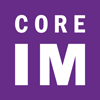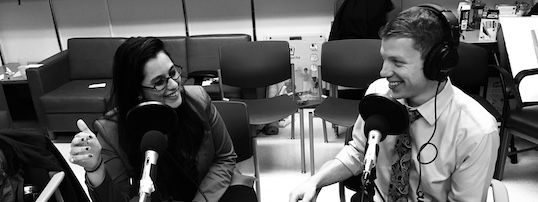Core IM
Kidney transplants not only offer a better quality of life but have a better mortality when compared to dialysis. However, clinicians are not as comfortable bringing up pre-transplant. Join the Core IM team as they dive into who is eligible, the transplant process, and living vs. deceased kidney donations.
After this podcast, listeners will better understand who is eligible for kidney transplant, when to refer patients for kidney transplant evaluation, what goes into pre-transplant evaluation and the factors that go into waiting time and how it contributes to health disparities.
First, listen to the podcast. After listening, ACP members can take the CME/MOC quiz for free.
CME/MOC:
Up to 0.5
AMA PRA Category 1 Credits ™ and MOC Points
Expires March 29, 2026
active
Cost:
Free to Members
Format:
Podcasts and Audio Content
Product:
Core IM
Welcome to Core IM, a virtual medical community! Core IM strives to empower its colleagues of all levels and backgrounds with clinically applicable information as well as inspire curiosity and critical thinking. Core IM promotes its mission through podcasts and other multimodal dialogues. ACP has teamed up with Core IM to offer continuing medical education, available exclusively to ACP members by completing the CME/MOC quiz.

Pearl 1: Why should we favor kidney transplant over dialysis?
- Kidney transplant improves quality of life, as dialysis can be quite cumbersome with usually physically going to a dialysis center
- After approximately 240 days, transplant also offers a mortality advantage
- Early after the transplant, there are increased risks related to the surgery and immunosuppression. However, after 240 days, mortality improves for transplanted patients
Pearl 2: Who is eligible for kidney transplant, and when should we start referring them?
- Patients must have a GFR<20 to be listed on the transplant list
- Even if the GFR <20 is from AKI or CKD and improves, the patient can still be listed and accrue waiting time.
- That's why early referral and evaluation for transplant is important, so that these folks can accrue adequate waiting time before they actually need transplant or dialysis.
- Even if the GFR <20 is from AKI or CKD and improves, the patient can still be listed and accrue waiting time.
- Eligibility criteria are based on the Organ Procurement and Transplantation Network policies, but may vary from center to center
- Patients must be well enough to go through the transplant surgery and the required immunosuppression (see Part 2 on post-renal transplant)
- Age and BMI cut-off can vary depending.
- Some centers will also have a frailty assessment for patients above a certain age.
- Higher frailty score have been shown to have higher mortality post transplant
- Patients should be referred for transplant when GFR is around 20-25, as pre-transplant evaluation may take a few months
- However, discussion for transplant may start when GFR is in the 40s or 30s in patients with clear eventual progression to kidney replacement therapy.
- Once the pre-transplant work-up is done, patients can be put on the transplant list as soon as their GFR hits 20
- To avoid bias in referral, patients should be referred to a transplant center when in doubt about eligibility
Pearl 3: What is the pre-transplant process?
- Patients are evaluated by a multidisciplinary team, including the transplant surgeon, nephrologist, pharmacist, nurse coordinator, social worker, financial coordinator and more depending on the center
- Patients must also undergo an extensive medical work-up
- All patients must go through an age-appropriate cancer screening, including colonoscopy, pap smears, mammography, as well as PSA for some centers.
- Patients must also have a cardiovascular testing, which may include an EKG, echocardiogram, and/or nuclear stress test, to ensure that patients are healthy enough to go through surgery and anesthesia
- Lung function is also assessed, and patients who smoke may do PFTs and/or low dose chest CT
- All potential transplant patients and donors must also undergo psychological evaluation, and need to have a caregiver/support system.
- Other relevant medical work-up is evaluated on a case-by-case basis
Pearl 4: How long do patients wait on the transplant list?
- Patients can be on either the active or inactive waiting list
- Given that kidney transplants last a certain number of years, patients should ideally wait until they are close to needing renal replacement therapy before being put on the active list
- The inactive list is therefore for asymptomatic patients who are well. Patients start accruing time on the transplant list without being activated.
- Multiple factors affect wait time on the list
- Blood type and sensitisation to HLA antibodies is an important factor
- Geographic location also matters, as kidney transplant availability varies by location
- Wait time on the list can be decreased through multiple strategies
- Being listed at multiple sites, including areas with shorter wait times, can accelerate the transplant process
- However, this requires the financial means to travel fast to that location for evaluation, follow ups, and ultimately the kidney transplant, which is unfeasible for most patients
- Consenting for a Hepatitis C transplant can also allow patients to receive a kidney faster
- We now have great treatment options for Hepatitis C, which allows non-infected patients to receive a Hepatitis C infected kidney
- Another way is to consent for high Kidney Donor Profile Index kidneys
- KDPI assesses transplant kidney function. While a standard kidney may last 12-14 years, a high KDPI kidney may only last 7-9 years.
- This strategy is ideal for older patients who don’t necessarily need a kidney that will last more than 10 years
- Being listed at multiple sites, including areas with shorter wait times, can accelerate the transplant process
Pearl 5: How do living donation work, and what are the risks?
- Who is eligible to be a living donor?
- Donors must be at least 18 to 21 years old, depending on each transplant center
- Donation must be voluntary. Potential donors are evaluated by a social worker and psychologist to ensure that donation is free from coercion
- Patients with medical conditions that affect the kidney, such as diabetes, lupus, or active drug use, will not be eligible for donation.
- Some centers also have a BMI cut-off, as obesity may predispose to health conditions such as hypertension and diabetes that may affect the kidney
- Potential donors must undergo a medical evaluation
- Medical work-up for the donor and the recipient is done by 2 different teams to avoid conflict of interest
- Donors undergo kidney imaging with ultrasound and abdominal CT scan to assess the number of vessels. Some centers also perform nuclear scans to calculate each kidney’s contribution to the total GFR
- A psychosocial evaluation is also done, where the surgeon informs the donor of surgical risks and where a social worker will ensure adequate support for recovery
- If a donor and recipient are not compatible, they may enter a paired kidney exchange
- Through an algorithm, the National Kidney Registry creates of a chain of transplants to maximize the number of recipients and donors that can be paired at a time
- Living transplant offer multiple advantages
- Living transplants eliminate the wait list time, and patients are able to schedule their surgery
- Living kidneys suffer from less cold ischemia, allowing the transplant kidney to work better and longer
- While deceased kidneys may last 12-14 years, living kidneys can last 15-16 years
- Being a donor also has associated risks
- The risk of death from surgery is low at 3/10 000 patients. However, considering that this is a surgery that is not required for the donor, it is a non negligible risk
- Kidney donation also increases blood pressure by 5-10 mmHg over 5-10 years after donation, which can cause hypertension
- Kidney donation also has a small risk of ESRD
- After surgery, the donor loses 50% of their GFR. Over time, the remaining kidney will hypertrophy slightly to compensate, but a permanently loss of 25-30% of kidney function remains
- The risk of ESRD post donation at 15 years is about 30/10 000 patients, which is low but not non-existent
- There does not seem to be an increased mortality risk with donation, although data is scarce.
- Although there are risks for kidney donation, donors receive psychological benefit from donating
- Data suggests that donors do not regret their decision
Contributors
Shreya Trivedi, MD, ACP Member – Editor
Angelica Chen, MD – Editor, Author
Tomas Guerrero, MD – Editor, Author, Host
Karin True, MD – Guest expert
Martha Pavlakis, MD – Guest expert
Marty Fried, MD - Host
Reviewers
Jeffrey William, MD
Surya Manivannan, MD
Those named above, unless otherwise indicated, have no relevant financial relationships to disclose with ineligible companies whose primary business is producing, marketing, selling, re-selling, or distributing healthcare products used by or on patients. All relevant relationships have been mitigated.
Release Date: March 29, 2023
Expiration Date: March 29, 2026
CME Credit
This activity has been planned and implemented in accordance with the accreditation requirements and policies of the Accreditation Council for Continuing Medical Education (ACCME) through the joint providership of the American College of Physicians and Core IM. The American College of Physicians is accredited by the ACCME to provide continuing medical education for physicians.
The American College of Physicians designates this enduring material (podcast) for .5 AMA PRA Category 1 Credit™. Physicians should claim only the credit commensurate with the extent of their participation in the activity.
ABIM Maintenance of Certification (MOC) Points
Successful completion of this CME activity, which includes participation in the evaluation component, enables the participant to earn up to .5 medical knowledge MOC Point in the American Board of Internal Medicine’s (ABIM) Maintenance of Certification (MOC) program. Participants will earn MOC points equivalent to the amount of CME credits claimed for the activity. It is the CME activity provider’s responsibility to submit participant completion information to ACCME for the purpose of granting ABIM MOC credit.
How to Claim CME Credit and MOC Points
After listening to the podcast, complete a brief multiple-choice question quiz. To claim CME credit and MOC points you must achieve a minimum passing score of 66%. You may take the quiz multiple times to achieve a passing score.


